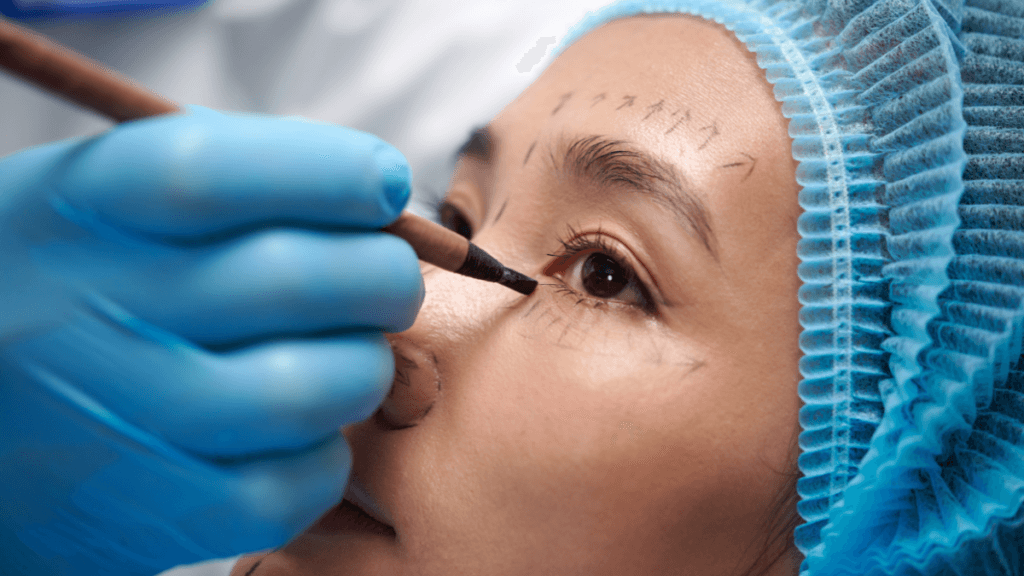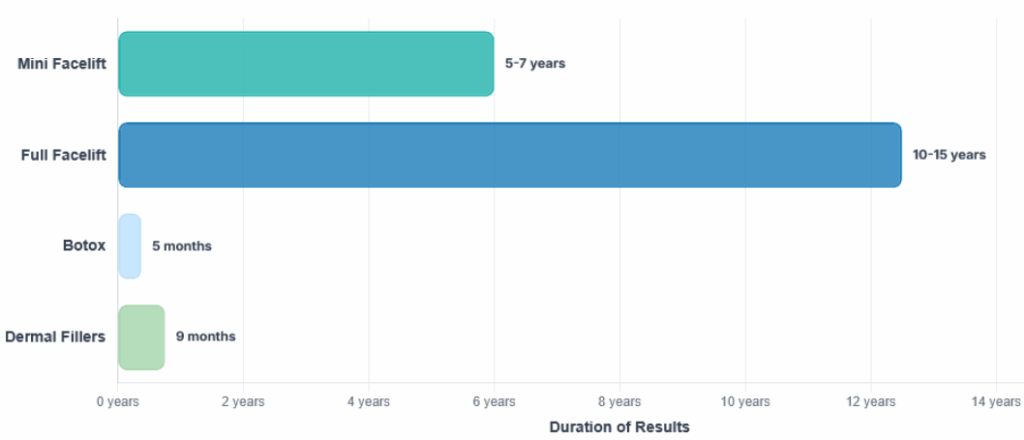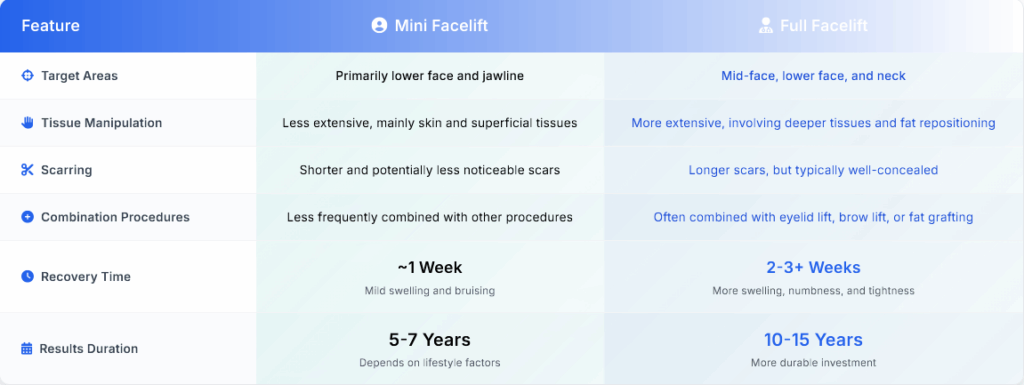Facial rejuvenation treatments are becoming more and more popular in the UK, with more and more people looking for ways to fight the signs of ageing and keep their skin looking fresh.
According to the British Association of Aesthetic Plastic Surgeons (BAAPS), there was a 5% increase in cosmetic surgical procedures from 2023 to 2024, totalling 27,462 procedures. This growth was largely driven by facial rejuvenation and body contouring procedures.
The non-invasive aesthetic facial rejuvenation treatment market has also expanded significantly. Botulinum toxin treatments (commonly known as Botox) experienced a 12% year-over-year increase, with over 6.2 million procedures performed in 2023. Dermal fillers followed with a 9% increase, reflecting a growing preference for less invasive methods to maintain a youthful appearance.
This growth just highlights how many people want to hit the rewind button when it comes to ageing. Of course, non-surgical options offer temporary fixes. So, if you are in the market for something longer-lasting and more dramatic, facelifts are the way to go.
And that is what we will be discussing today.
Different Types Of Facelifts

In the world of facelifts, you can choose between a mini facelift and a full facelift.
Let’s start with a mini facelift, often called a “weekend facelift”. This type of facelift is a simpler, less invasive version of a full facelift with a much quicker recovery.
And it is absolutely GREAT for people in their 40s or 50s who are starting to notice mild to moderate sagging around the lower face and jawline. This procedure involves smaller incisions that are cleverly hidden around the ears, as only a light lift is made. This gives a natural, refreshed look without going too deep.
Because it is less intense, the healing time is shorter and the risk of complications is reduced.
Longevity of Facial Rejuvenation Procedures

On the other hand, a full facelift is a more thorough procedure, aimed at more significant skin sagging, deep folds, and muscle drooping across the mid-face, jawline, and neck. Most people typically consider this option when they are in their mid-50s or older, dealing with more drastic signs of ageing like prominent wrinkles and neck bands.
A full facelift involves more extensive tightening of the underlying muscle and repositioning of deeper tissues. It may also include additional procedures, such as a neck lift or fat grafting, for longer-lasting results. This means a longer surgery time, general anaesthesia, and a extended recovery time of 2 to 3 weeks minimum.
| Feature | Mini Facelift | Full Facelift |
| Target Areas | Primarily lower face | Mid and lower face, neck |
| Tissue Manipulation | Less extensive, mainly skin and superficial tissues | More extensive, involving skin, deeper tissues, and sometimes fat repositioning |
| Scarring | Shorter and potentially less noticeable scars | Longer scars, but typically well-concealed |
| Combination Procedures | Less frequently combined with other procedures | Often combined with eyelid lift, brow lift, or fat grafting |
How To Choose To Right Option For You
Of course, choosing between a mini facelift and a full facelift depends on a few factors, like your age, skin quality, and personal aesthetic goals. Mini facelift patients usually want a natural refresh with minimal downtime, while those opting for a full facelift want a more dramatic, long-term correction.
Naturally, as mentioned, recovery also varies. A mini facelift typically involves mild swelling and bruising, with a return to normal activities in about a week. A full facelift, however, has a longer recovery time with more swelling, numbness, and tightness that can take several weeks to fully improve.

However, discussing your concerns and your overall aesthetic goals with a highly qualified plastic surgeon is the best way to choose between the two. Try to choose a surgeon registered with BAAPS or BRAS to ensure you get a safe and conscientious treatment.
Another question commonly asked is, how long do the results last? And it is a great one. On average, mini facelifts typically last 5 to 7 years, depending on lifestyle factors like sun exposure and skincare. A full facelift, however, can last anywhere between 10 to 15 years, making it a more durable investment. But, it is important to note that this longevity comes at a higher cost.
From a mental and emotional point of view, both mini and full facelifts can potentially help people feel more confident. There is also a growing trend for combining mini facelifts with non-surgical treatments like fillers or high-intensity focused ultrasound (HIFU) to enhance and prolong results without needing full surgery.

It is also important to keep in mind that facelifts will not change your bone structure or stop the ageing process, but they can help restore a firmer, more lifted look.
To Lift Or Not To Lift
Whether you are after a subtle refresh or a more transformative lift, facelifts offer you the opportunity to combat the visible signs of ageing. With options ranging from the quick-recovery mini facelift to the more comprehensive full facelift, there is something for everyone.
The key is to always have an honest conversation with a sought-after and certified cosmetic surgeon who can guide you toward the most suitable approach. And remember, while facelifts cannot freeze time, they can certainly help you feel more confident in the skin you are in!


